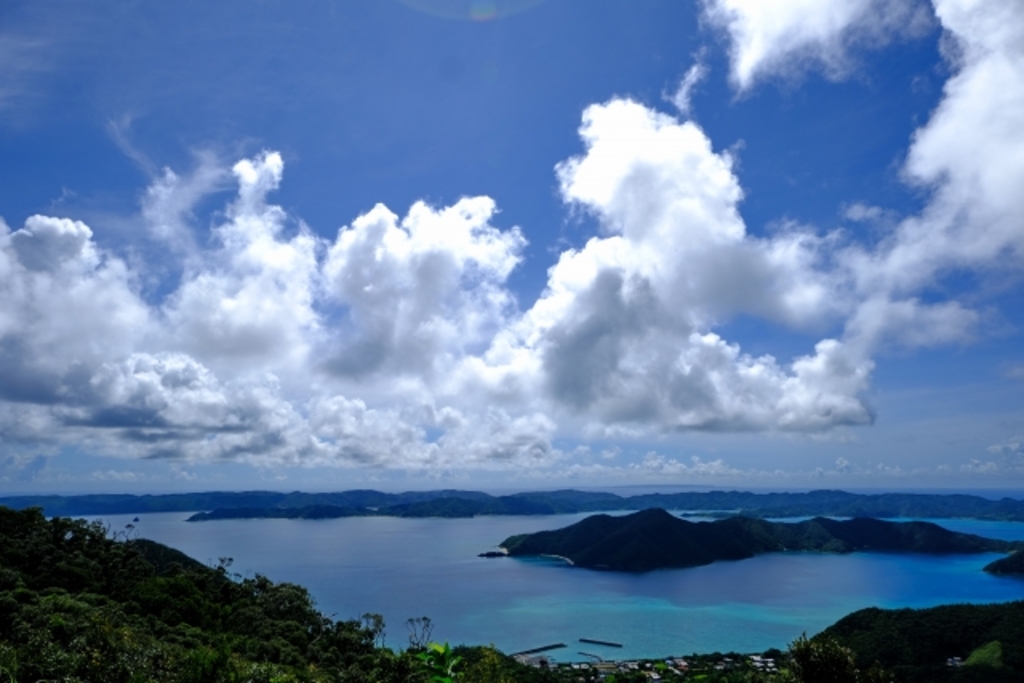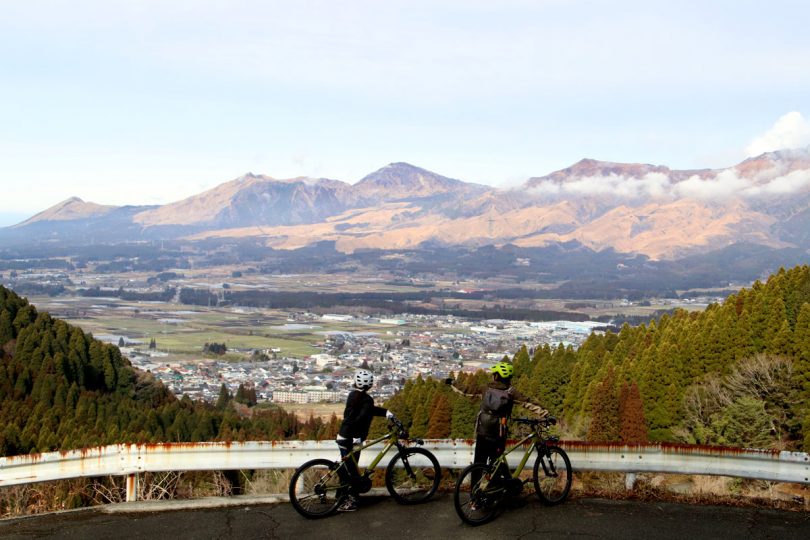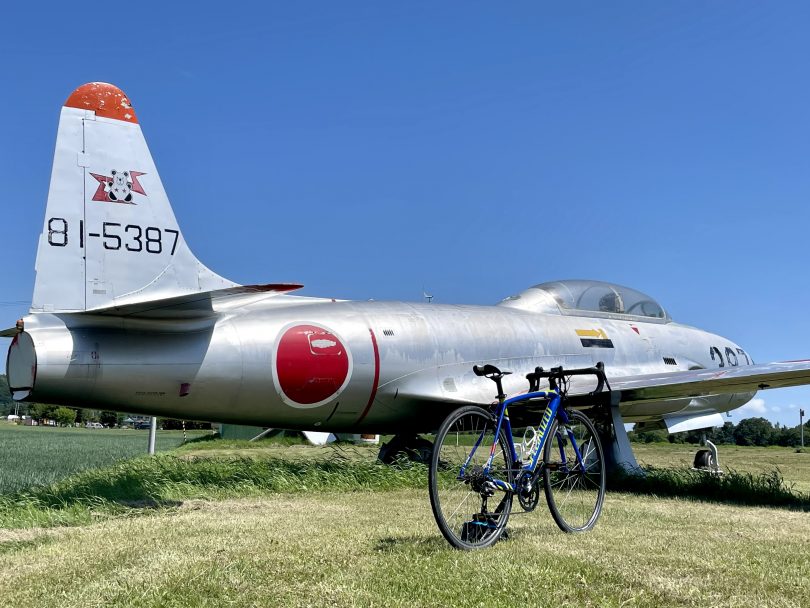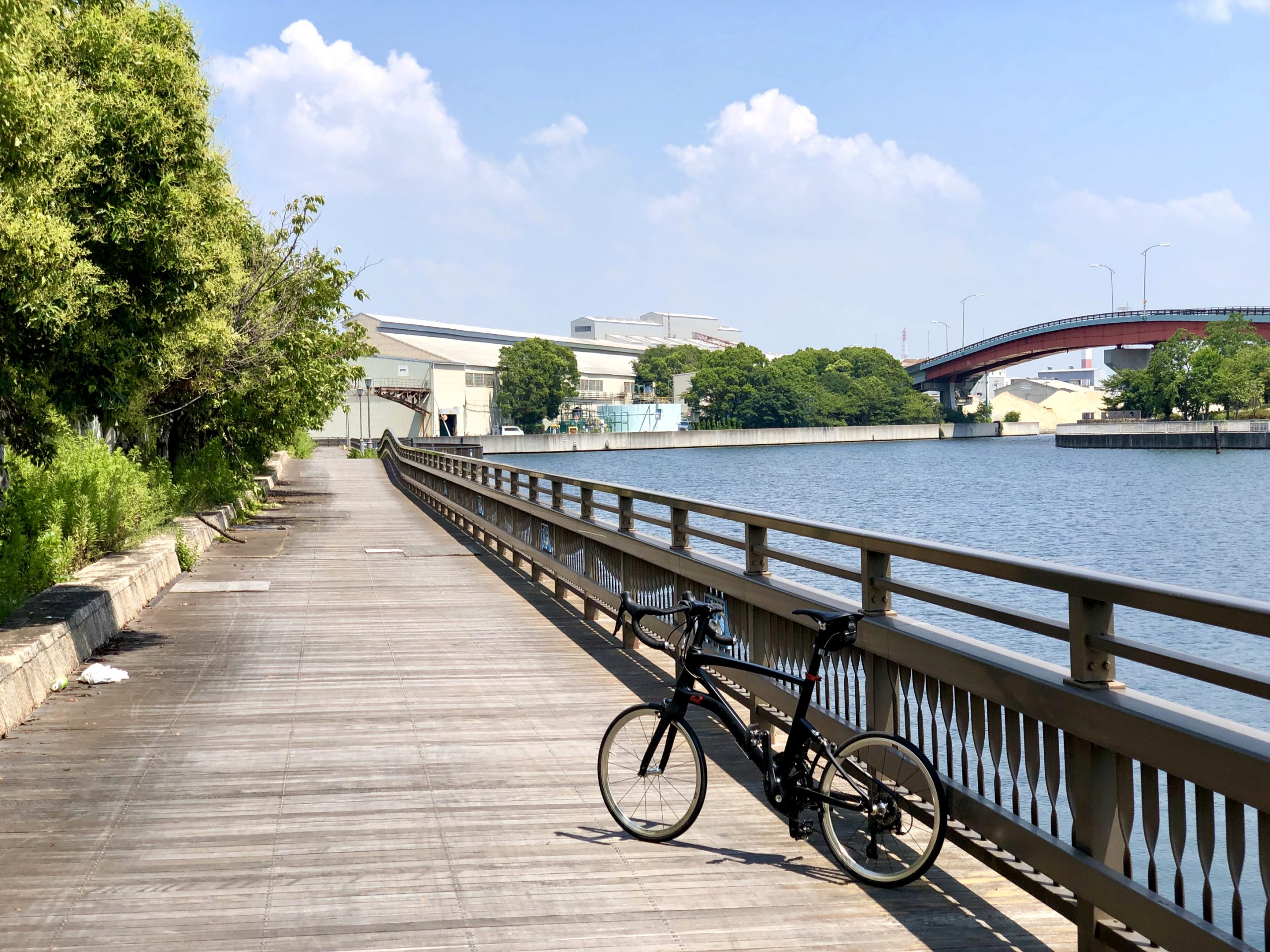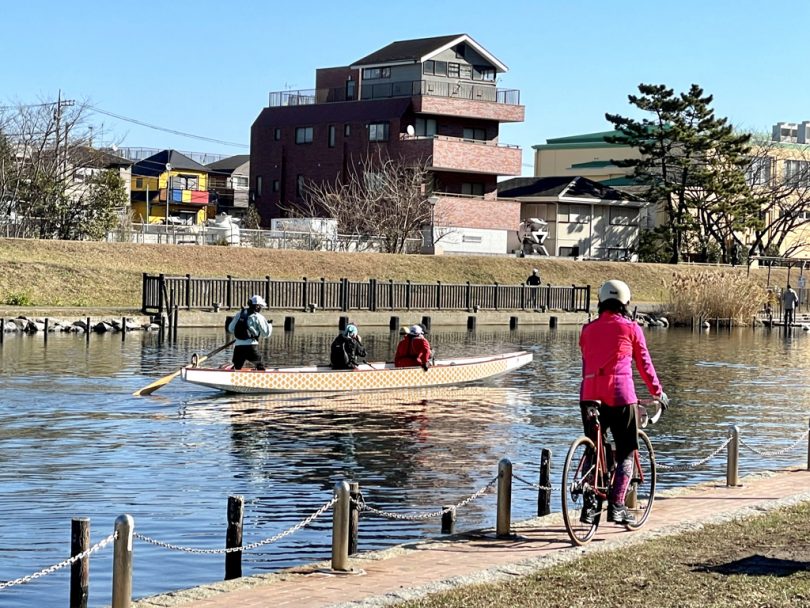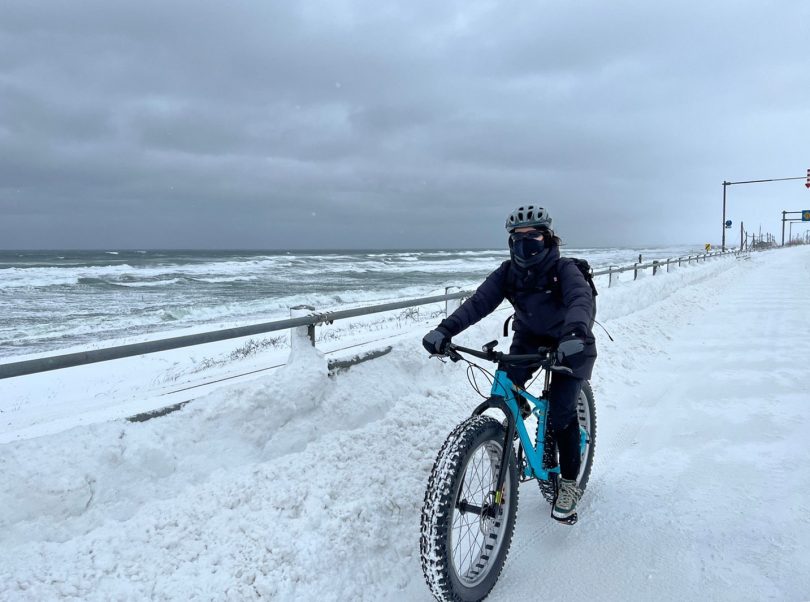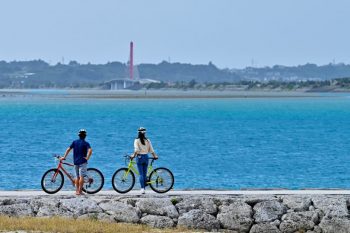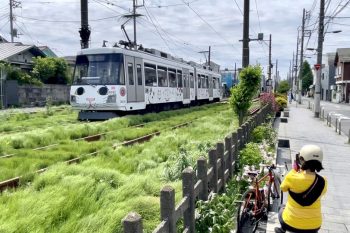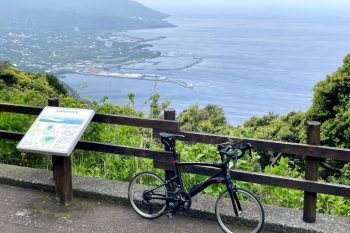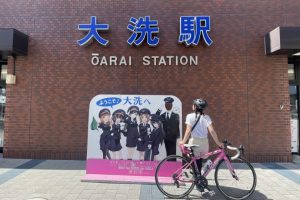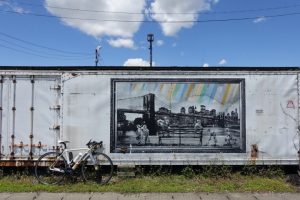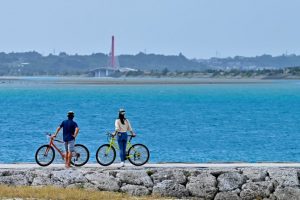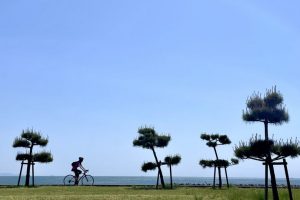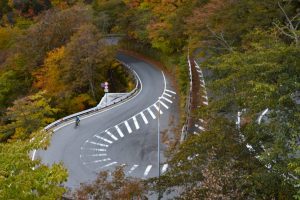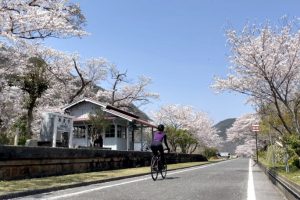When you travel to a city for the first time, you can of course rent a car or take a bus, but using a bicycle is a great way to get to know the city and get to know it better.
Recently, many tourist spots around the world have begun to offer public share cycle services that can be rented and returned at each port.
Kanazawa city in Ishikawa prefecture is one such city. This time, I would like to report on a one-day course (about 7km) that combines the Kanazawa city public share cycle service, ”Machi-nori” with walking to visit major sightseeing spots in the city.
Kanazawa is very accessible from Tokyo by Hokuriku Shinkansen bullet train and from Osaka by Thunderbird limited express train, each taking about 2.5 hours. I hope this article will help you prepare for your future trip to Kanazawa.
Contents
- Easy with the app! Start from Kanazawa Station with the “Machi-nori” Share Cycle
- Heading for Myoryuji Temple and the Nishi Chaya district
- Lunch: Authentic Kaisen-don or B-grade Cuisine “Hunton Rice”
- An Artful Afternoon at 21st Century Museum of Contemporary Art, Kanazawa
- Enjoy Autumn at Kenrokuen Garden and Kanazawa Castle Park
- Oyama Shrine, associated with Maeda Family
- Finish at Kanazawa Station! The Station is Full of Local Gourmet Food
- Summary
- Related links
“Machi-nori” utilizes the “docomo Share Cycle” system, and has 69 ports (as of September 2021) in central and suburban Kanazawa, and all bikes are electrically assisted.
A “one-time membership” (no membership fee) allows you to use the service for 165 yen (tax included) for the first 30 minutes, and an additional 110 yen (tax included) for each additional 30 minutes. Since I wanted to spend much time on seeing each spot, I used “one time membership” system to rent and return the bike at each destination port.
How to use “Machi-nori” is quite simple. Enter the ID on the bike into the “docomo Bike Share” smartphone app, and a four-digit passcode will be displayed on the app screen. Enter the passcode into the LCD screen attached to the bike, and the lock will be unlocked. Payment is made by credit card or docomo payment service via the app (for a one-time membership).
You can also use “One Day Pass” which allows you to rent the bike for the whole day. (Web: 1,430 yen, counter: 1,650 yen (both tax included)) There is no age limit and anyone over 145cm tall can use the pass, so it’s good for family trips. You can choose either “One-time Membership” or “One-day Pass” depending on your route and travel time.
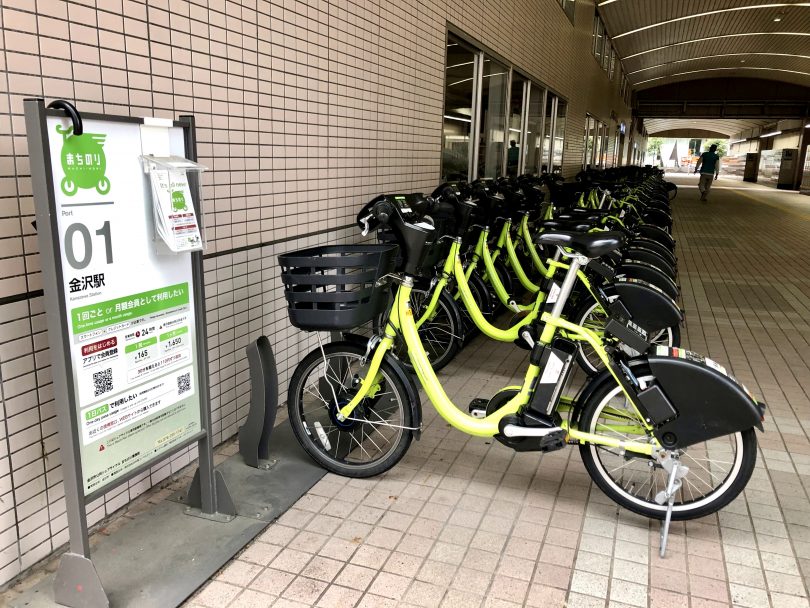
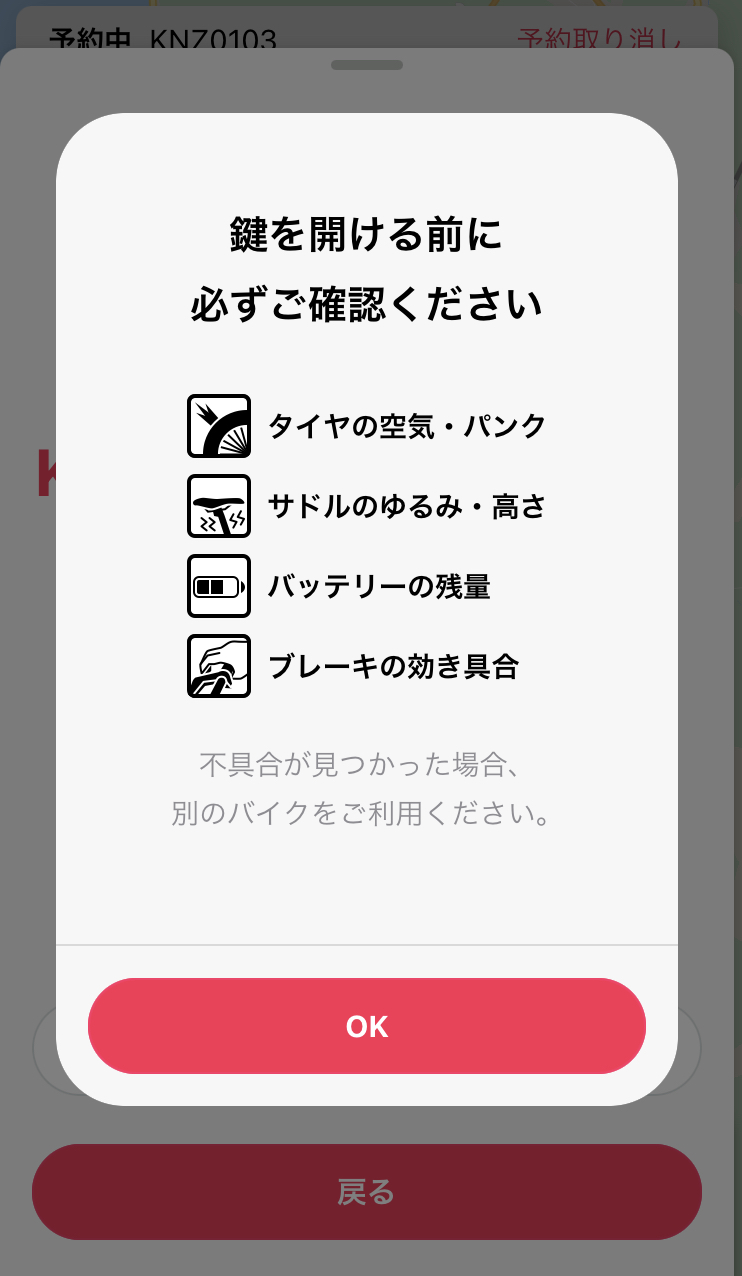
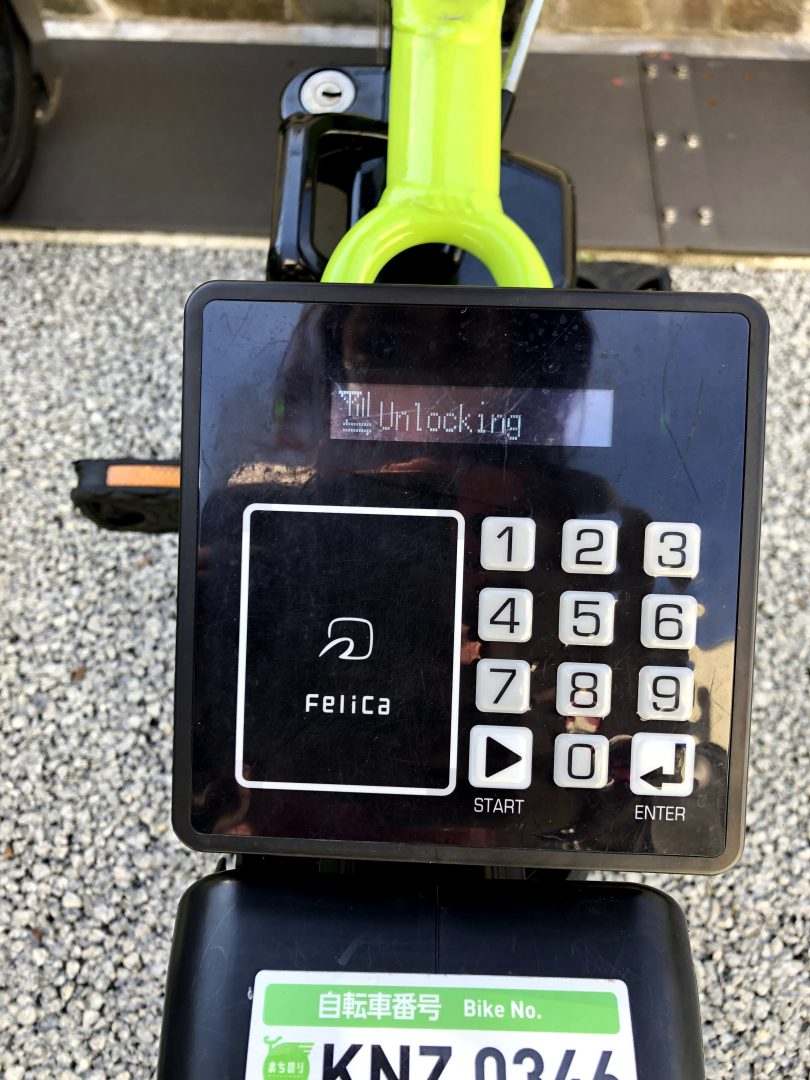
After picking up a map and pamphlets at the Kanazawa station tourist information center, the starting point for sightseeing in Kanazawa, I rented bicycles at the Machi-nori at Kanazawa station east port, located alongside the Kenrokuen (East) Exit, and set off to explore Kanazawa.
The first stop is Myoryuji Temple in the Nomachi-Hirokoji area.
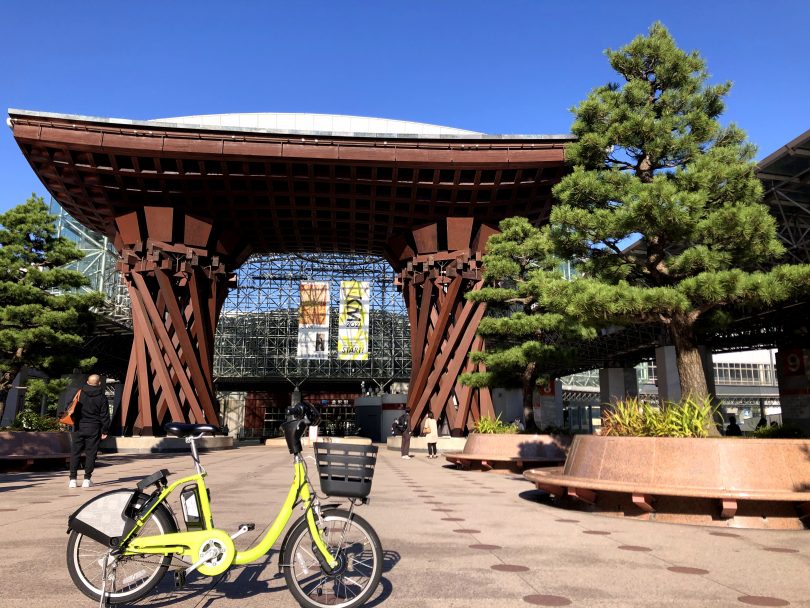
Heading for Myoryuji Temple and the Nishi Chaya district
On the way from Kanazawa station to Myoryuji temple, you will want to visit the Nagamachi samurai residential area. If you head west from Korinbo, the downtown area, you will enter an intricate alleyway. You can see glimpses of the Edo period, including the remains of the Nomura family’s residence, which held many important positions in the Kaga clan.
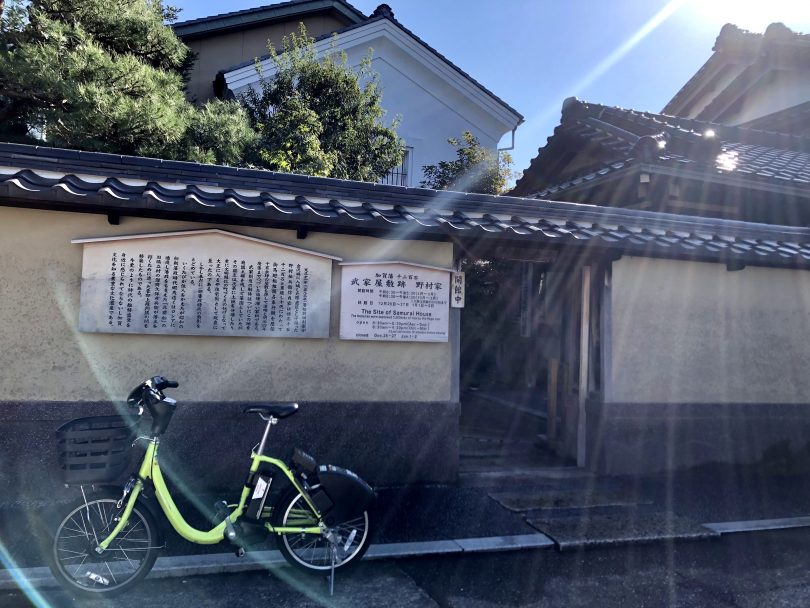
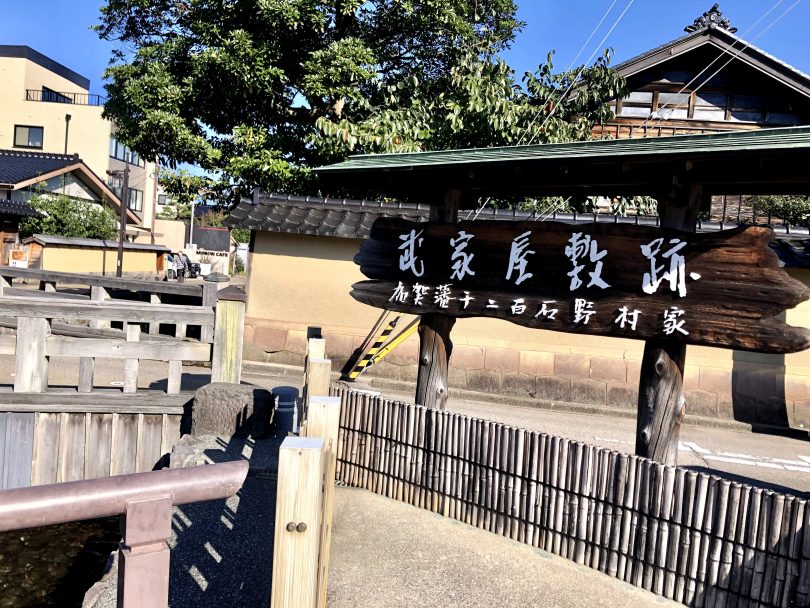
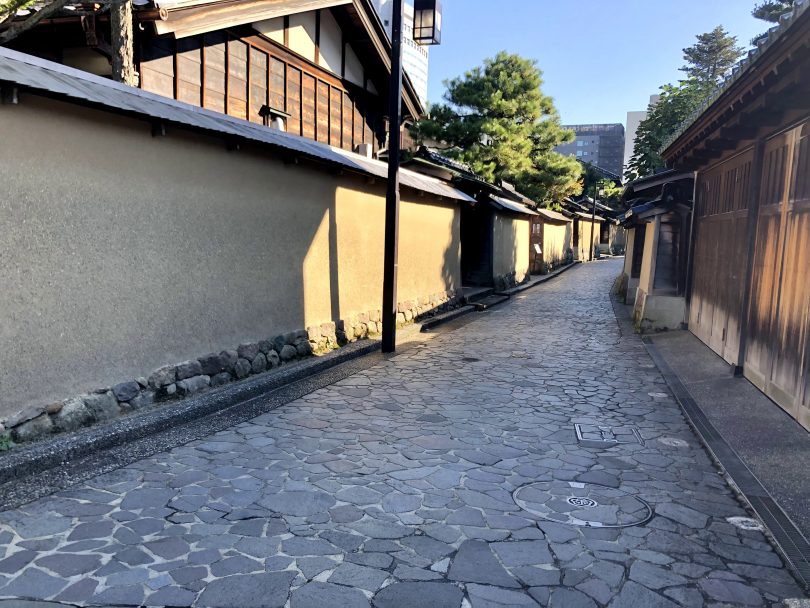
About 1km from the samurai residential area, cross the Saikawa bridge and return your bicycle at the LAWSON (a convenience store) Kanazawa Nomachi 1-chome port near Myoryuji temple.
The rental fee is charged every 30 minutes, so if you plan to spend a lot of time visiting temples and towns, it is more economical to return the bike once at a port near your destination instead of temporarily parking it.
Myoryuji temple is famous for its unique architecture, also known as “Ninja Temple”. Although it looks like a two-story building from the outside, it actually has four floors and seven levels inside, with 23 rooms and 29 staircases. The temple has a legendary well that serves as an emergency passage to Kanazawa castle in the event of an enemy invasion, as well as hidden staircases, money boxes embedded in tatami mats that can be used as pitfalls, and many other tricks.
The tour takes 40 minutes and the temple staff will guide you carefully (advance reservation required by phone).
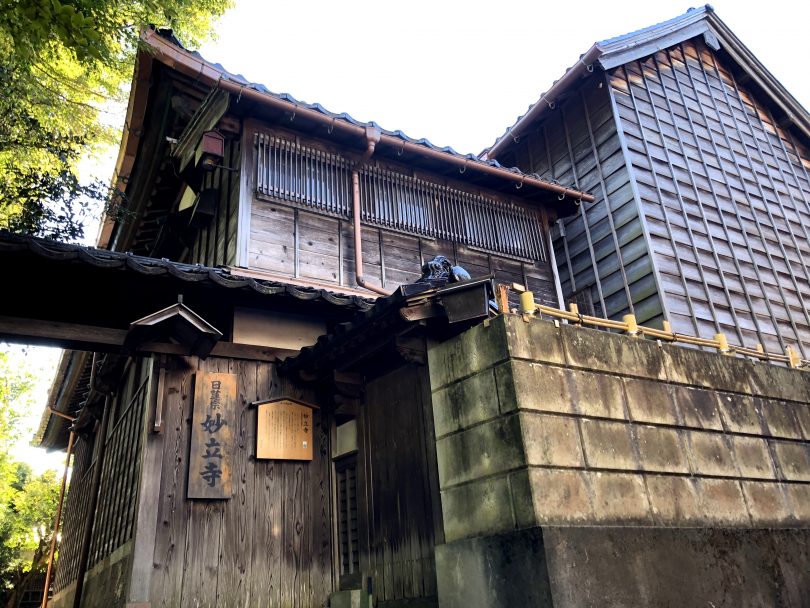

After visiting the temple, I walked to Nishi Chaya-machi. It is one of the three teahouse districts in Kanazawa, along with Higashi Chaya-machi and Kazuemachi Chaya-machi, and still retains the streetscape where samurai of the Kaga clan used to go.
There is a small local museum where you can see how the tea houses were built free of charge, and there are many stores selling Japanese sweets such as sweet beans, “monaka”, and “rakugan”.
I took out a “monaka” from the cafe “MAME Nomanoma,” which was a new kind of Japanese confectionery with a crunchy filling, sweet bean paste, and mascarpone cheese.

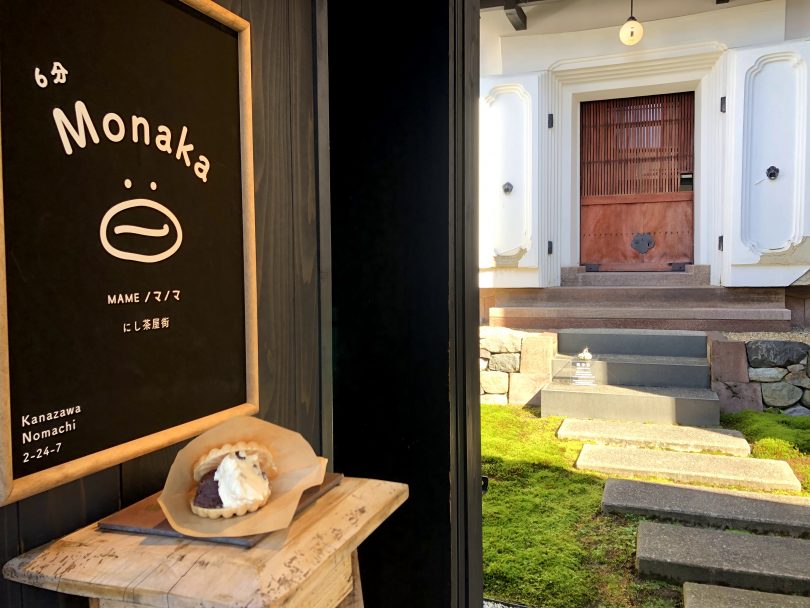
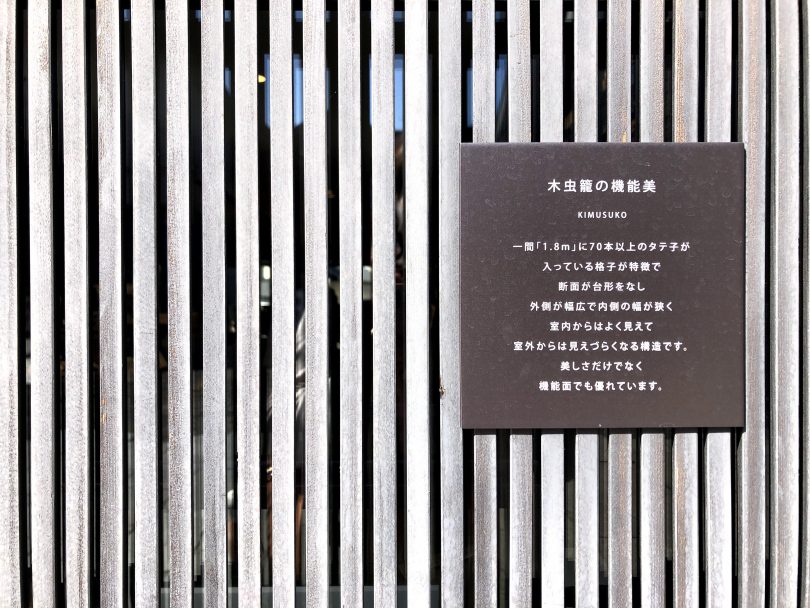
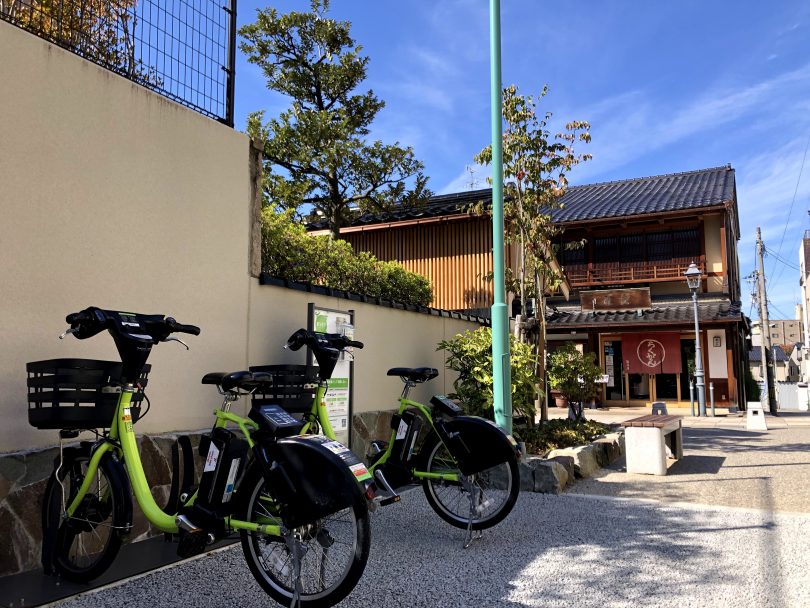
Lunch: Authentic Kaisen-don or B-grade Cuisine “Hunton Rice”
I rented bicycles at the Nishi Chaya-machi port and headed for lunch. There is no shortage of delicious food in Kanazawa, from traditional Japanese food and seafood to B-grade cuisine, both old and new.(In Japan, cheap but tasty local food is called “B-grade cuisine”. )
If you prefer seafood, head back to Kanazawa station area and visit Omi-cho market, a long-established market in the Hokuriku region that celebrated its 300th anniversary in 2021. 180 stores selling seafood, fruit and vegetables, and delicatessen items crowd the market, making it the kitchen of Kanazawa.
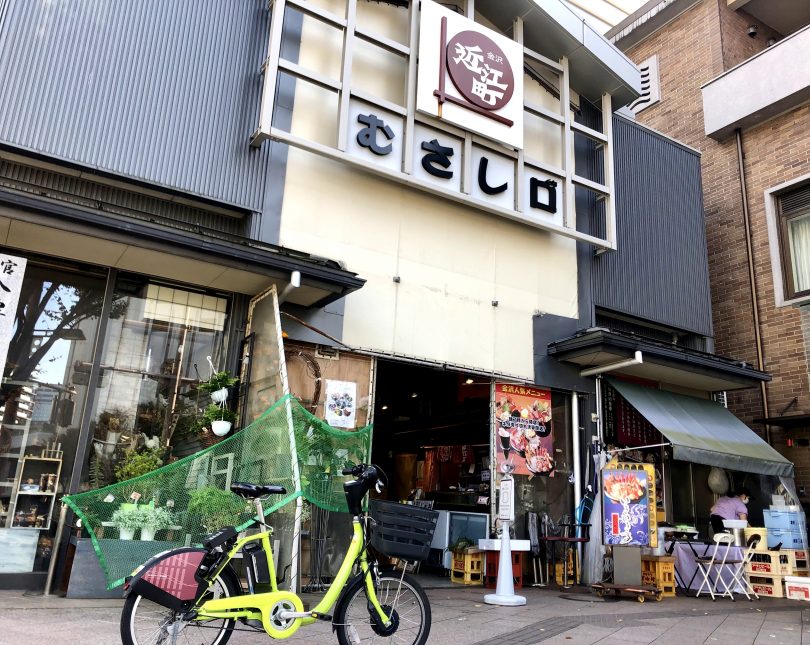

There are many restaurants and eateries in Omi-cho market, and Ikiiki-tei Omi-cho branch near the Musashi exit is particularly popular.
The “Ikiiki-tei Don”, a bowl of rice topped with fresh Hokuriku seafood such as sweet shrimp, yellowtail, amberjack, and blackthroat seaperch (known as “nodoguro” in Japanese), is sure to satisfy.
The restaurant is open from 7:00 a.m., and on weekends and holidays, people line up as soon as the restaurant opens. If you are staying the night before, I highly recommend waking up early in the morning when the waiting time is relatively short.
There are also many fresh fish stores where you can buy raw oysters and scallops and eat them on the spot, so you can enjoy the fresh taste of the local market.
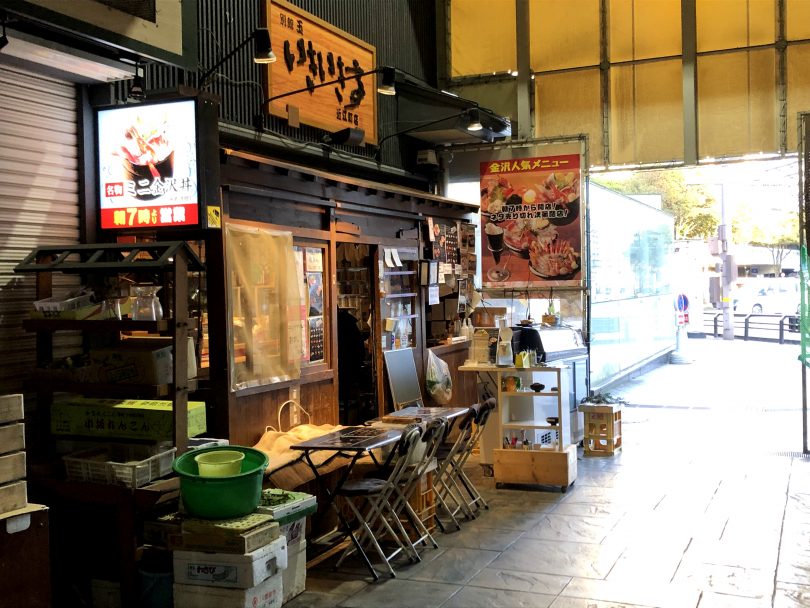
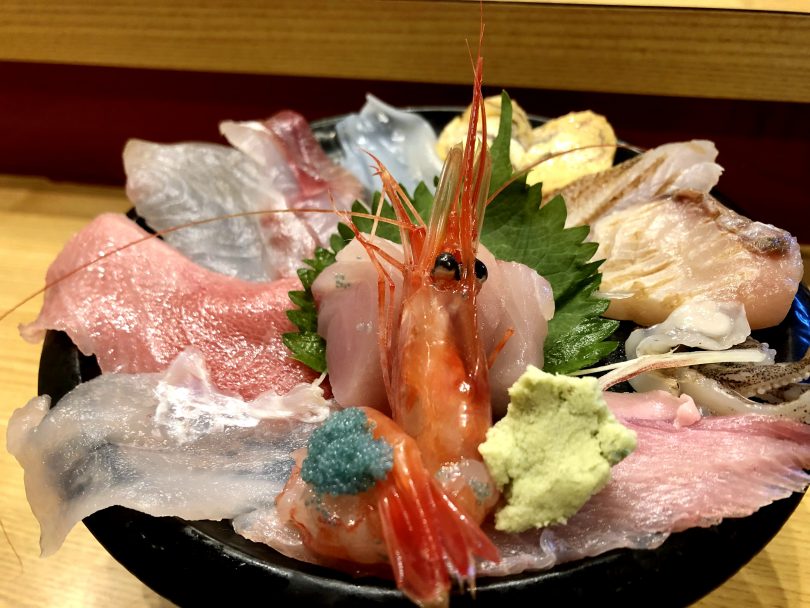
If you are looking for a B-grade cuisine, I recommend the “Hunton Rice” at Grill Otsuka, a long-established Western-style restaurant in Katamachi in the Korinbo area that has been around since 1957.
“Hunton” is a combination of the “hun” in “Hungary” and the “ton” in French for tuna. It is an omelet rice topped with ketchup and homemade tartar sauce, with fried swordfish tuna and small fried shrimp on top.
The ketchup rice is topped with more ketchup, which is mixed with the creamy tartar sauce to create a rich taste. This is a local food dish that is full of flavor and volume.
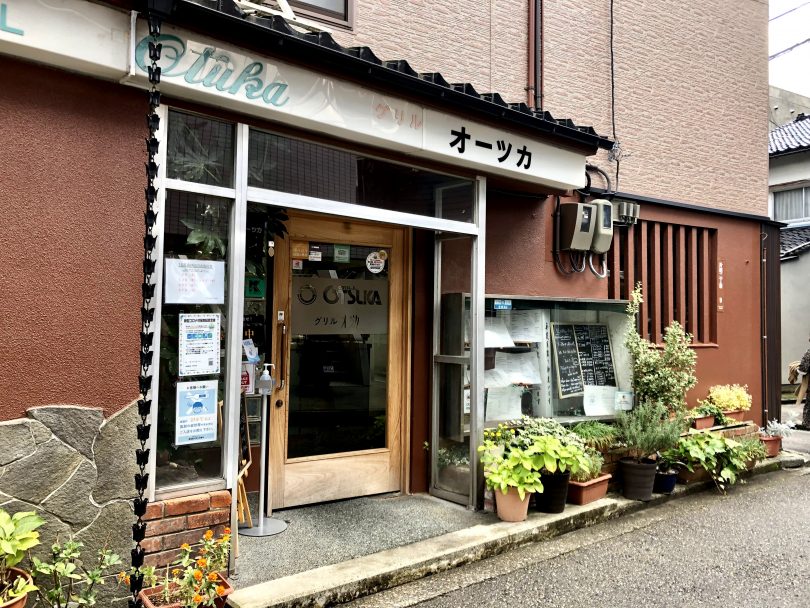
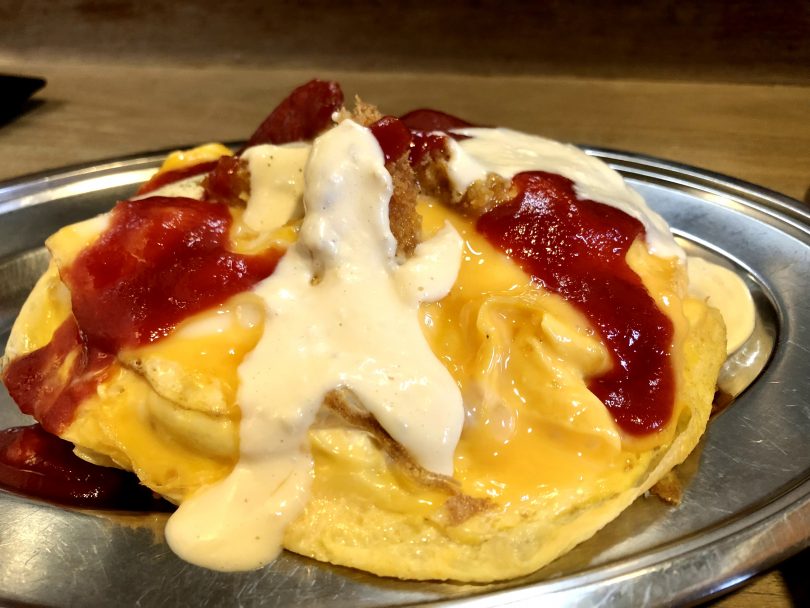
An Artful Afternoon at 21st Century Museum of Contemporary Art, Kanazawa
After filling my stomach with lunch, I got back on my bike and headed for the Hirosaka area. Hyakumangoku street is lined with retro architecture such as Ishikawa Shiko Memorial Cultural Exchange Center.
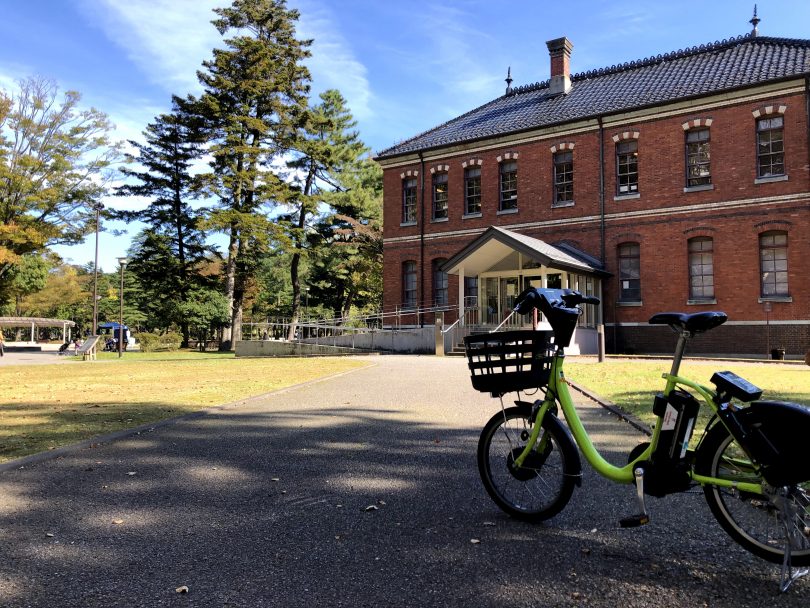
The highlight of the Hirosaka area is the 21st Century Museum of Contemporary Art, Kanazawa.
The museum celebrated its 16th anniversary in 2021 and is one of Kanazawa’s most popular spots, attracting around 2.5 million visitors every year. In addition to the permanent outdoor artworks that can be enjoyed free of charge, various special exhibitions are held in the museum throughout the year.
To visit the inside of the popular “Swimming Pool,” which gives you the sensation of being underwater, it is best to make a reservation in advance on the museum website.
Enjoying the streets by bicycle and immersing yourself in an extraordinary art space will refresh you.
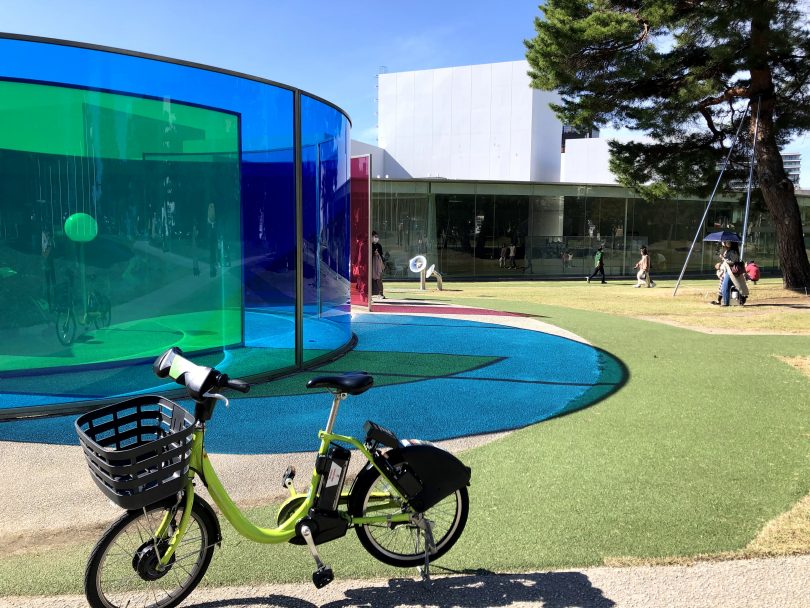
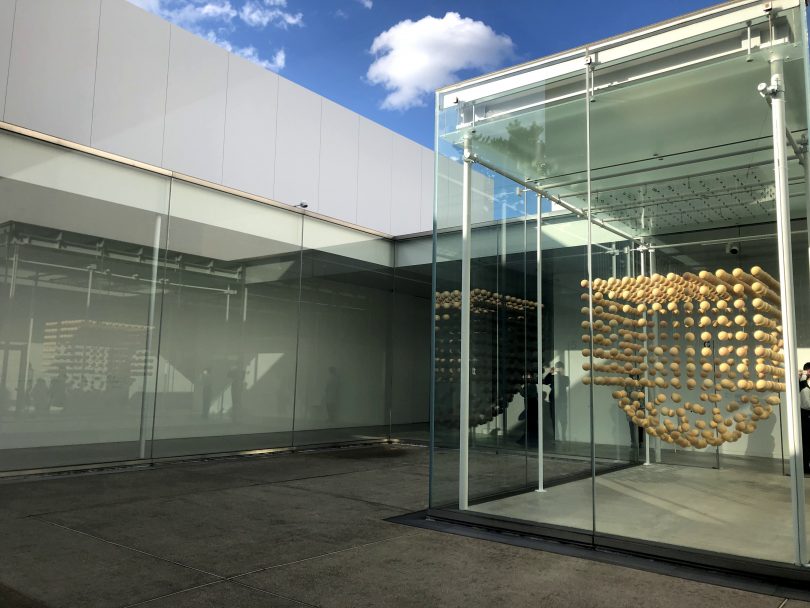
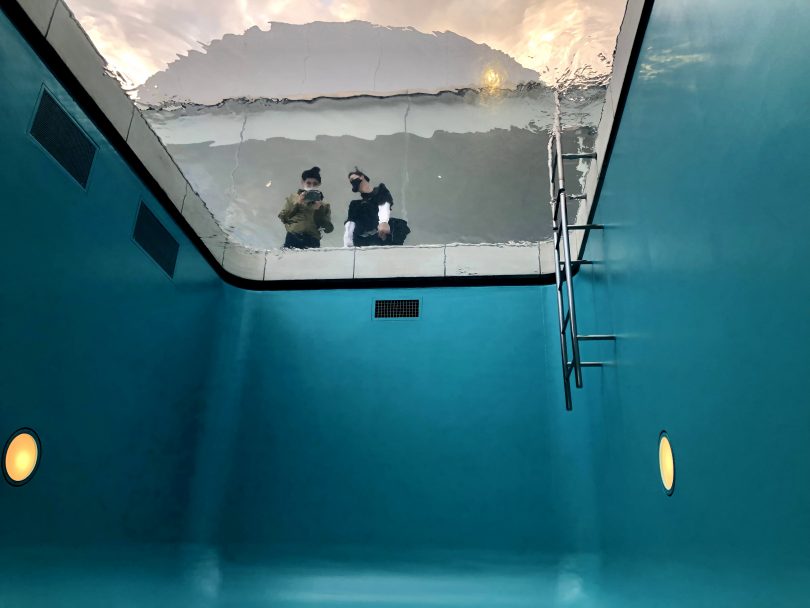
Enjoy Autumn at Kenrokuen Garden and Kanazawa Castle Park
Kenrokuen Garden and Kanazawa Castle Park are a short distance from the 21st Century Museum of Contemporary Art, Kanazawa.
Most of the major sightseeing spots have Machi-nori ports, and you can check the number of bikes available for rental and return through the app, so you won’t have any trouble.
After returning the bike at the Kenrokuen port, I walked around Kenrokuen and Kanazawa Castle Park.
Kenrokuen is one of the three most famous gardens in Japan, along with Korakuen Garden in Okayama and Kairakuen Garden in Mito. “Ken” means “combine” and “roku” means “six”. It is said that the name comes from the six scenic spots of the garden.
The park covers an area of 114,000 square meters, and it takes about 90 minutes to walk around. In addition to the “Snow Hanging” in winter, you can enjoy different flowers in each season and the maple leaves in autumn.
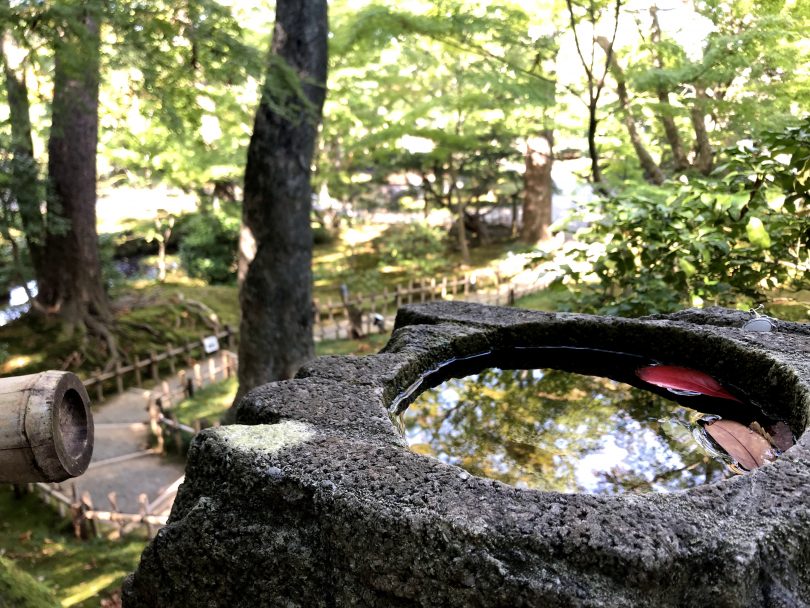
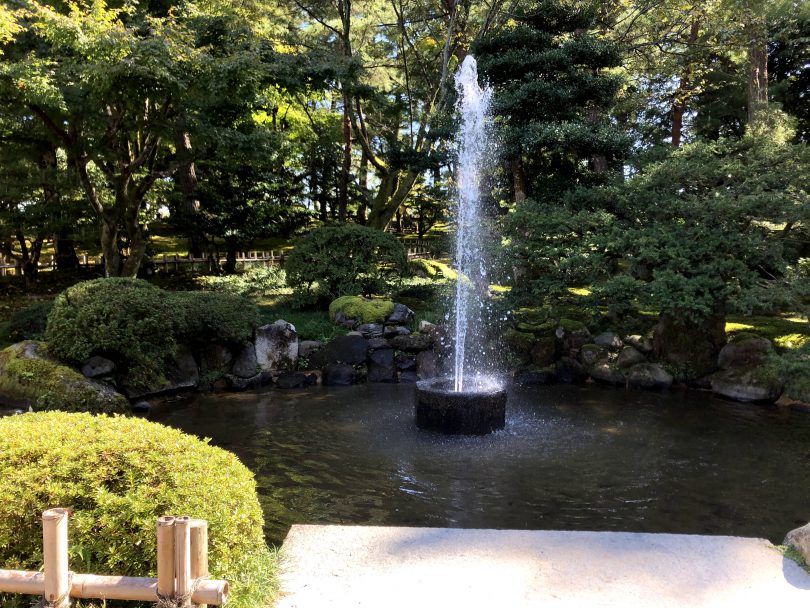
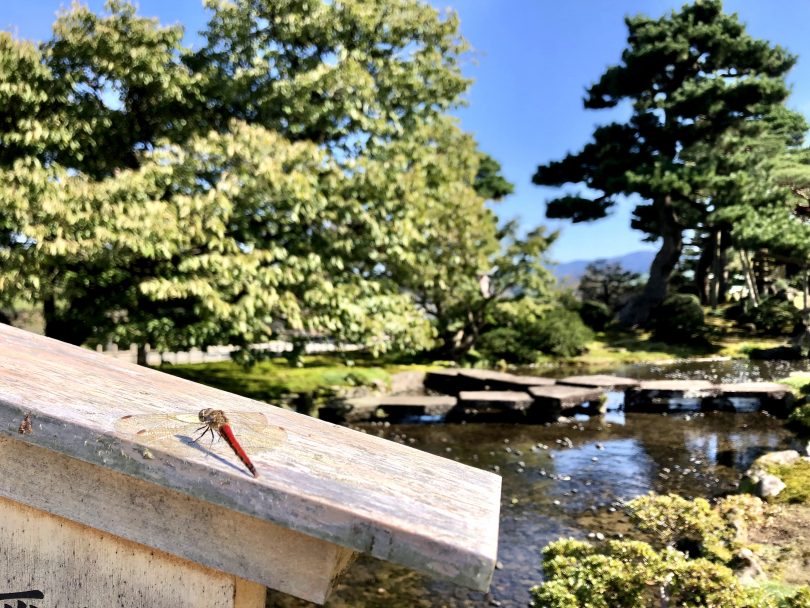
The adjacent Seisonkaku is also a must-visit spot if your time permits.
The Maeda family’s palace for the lady of the house, which is a combination of Shoin-zukuri and Sukiya-zukuri styles, is a national important cultural property.
The garden is also a beautiful and relaxing place.
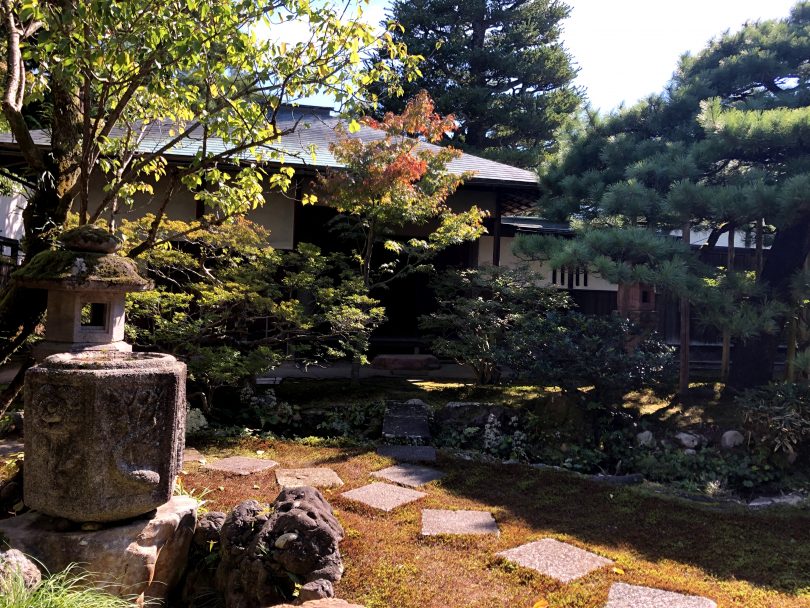
In Kanazawa Castle Park, which is connected to Katsurazaka entrance of Kenrokuen, visitors can see the inside of Hishi Yagura, Gojukan Hase, Hashizumemon, and Tsuduki Yagura, which were restored in 2001 based on old documents and drawings.
Watching the video that introduces the process of faithfully restoring the structures using the technology of the time, you can only admire the mind-boggling work process.
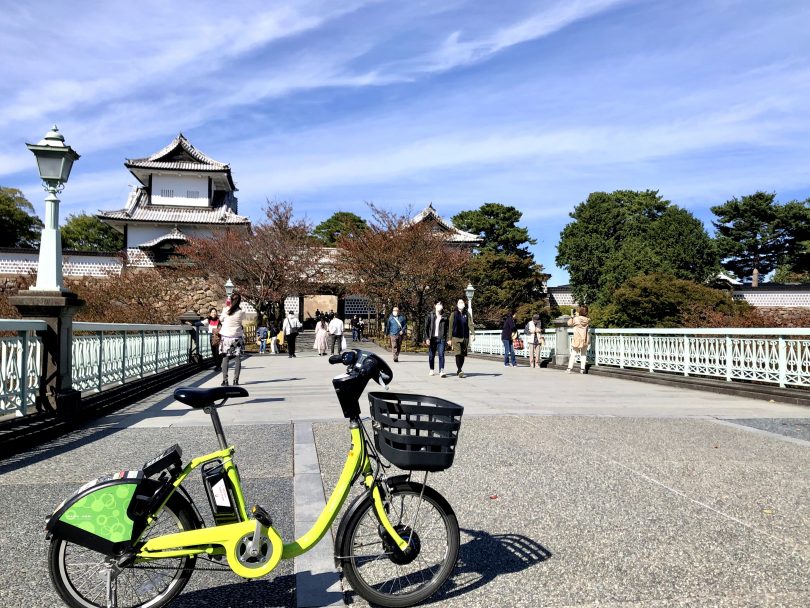
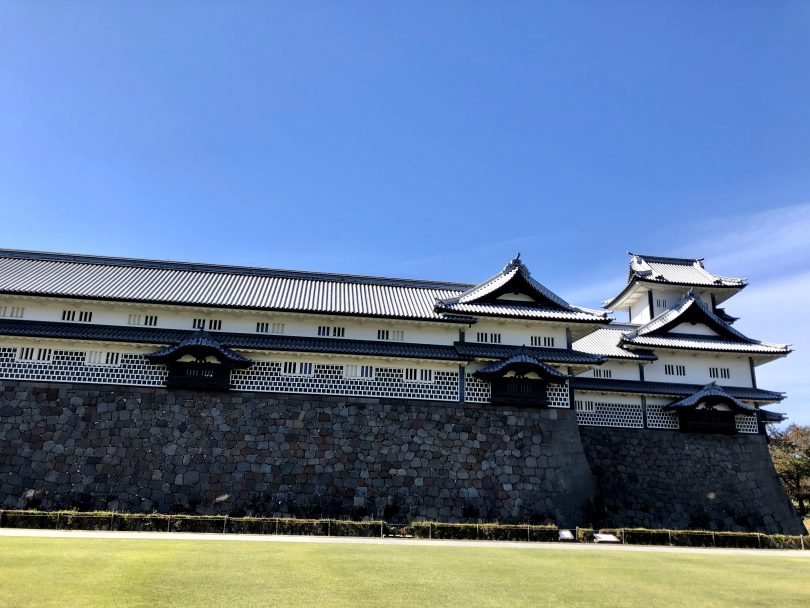
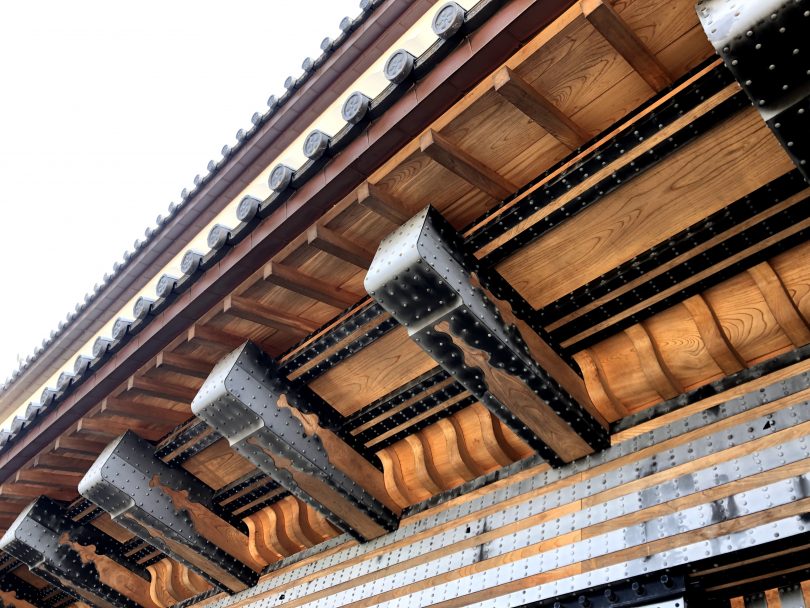
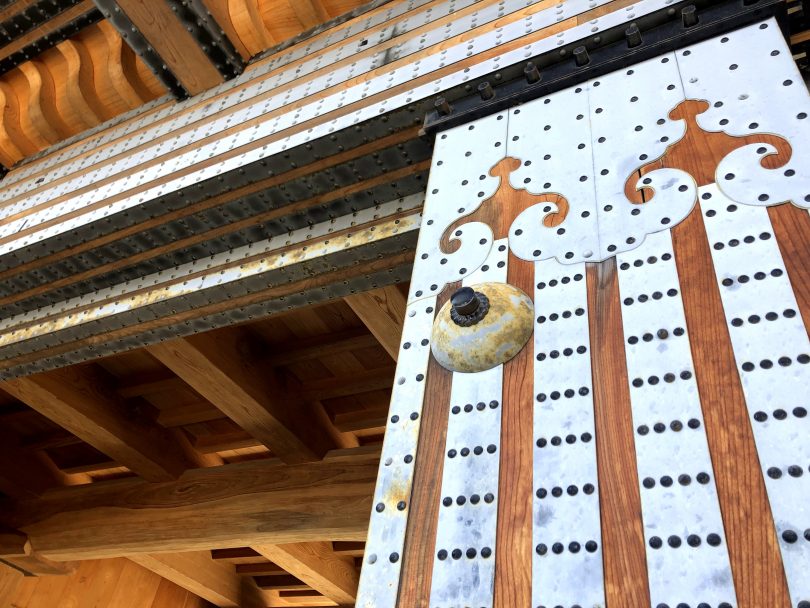
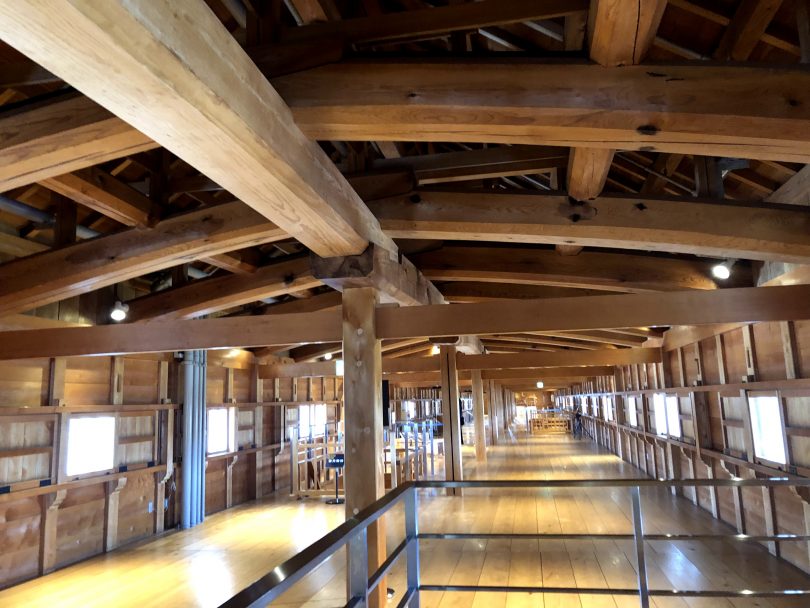
When you get tired of walking, you can have a cup of tea at Gyokusen-an, a teahouse overlooking Gyokusen-in Maru Garden in the park. You can have a cup of powdered green tea and some Japanese traditional confectionery.
On this day, I had “Mine-no-Aki” (autumnal chestnut paste) on a Kutani-yaki (Kanazawa’s traditional pottery) plate.
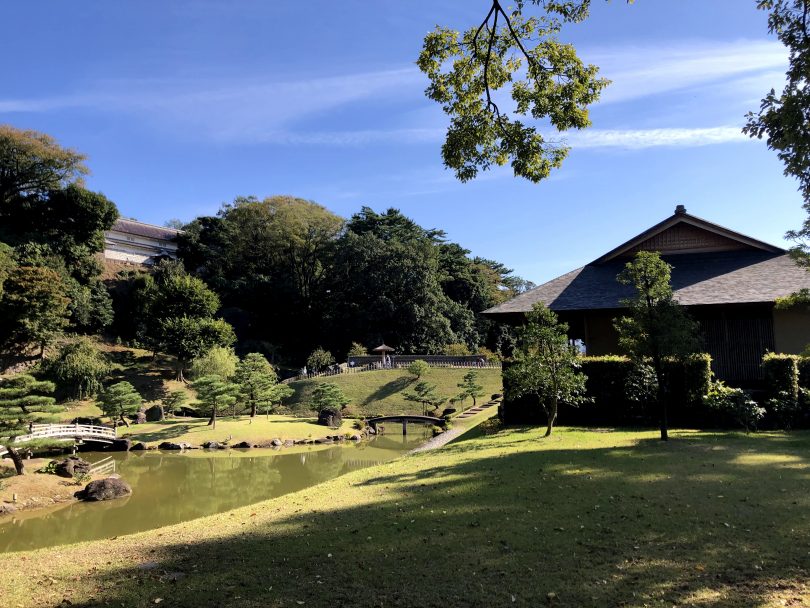
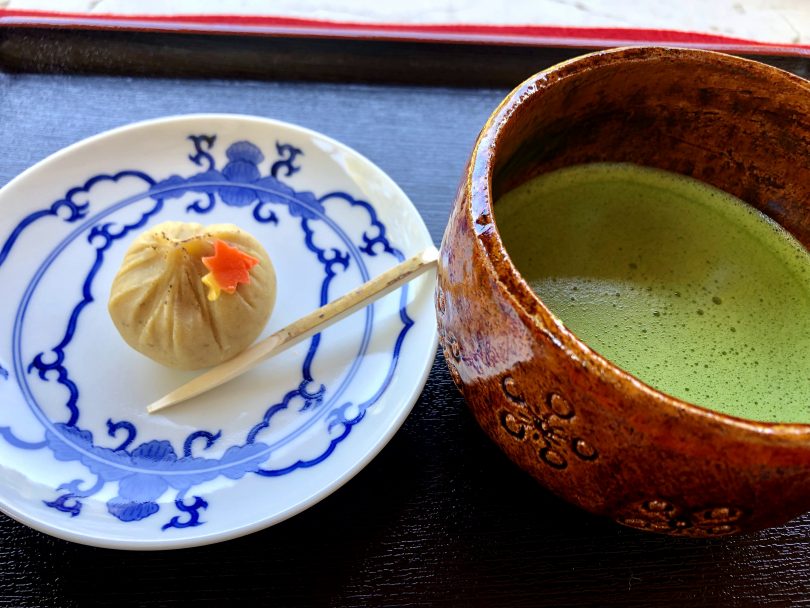
Oyama Shrine, associated with Maeda Family
The final destination is Oyama shrine, which is associated with Maeda family. It can be reached directly by walking across the bridge that leads from the “Nezumita-mon” gate next to Gyokusen-an.
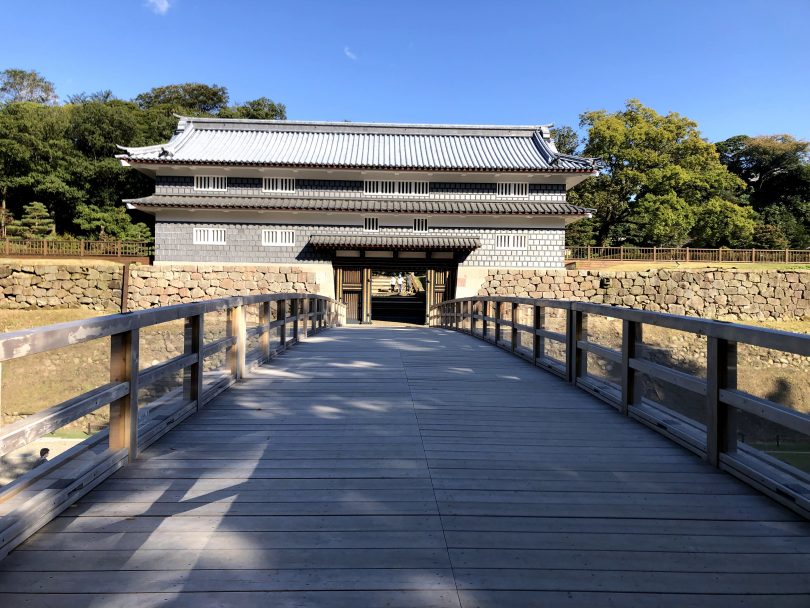
Oyama Shrine is dedicated to Toshiie Maeda and his wife Omatsunokata. The shrine gate, a blend of Japanese and Western style, is decorated with five-colored stained glass windows, giving it an exotic look. The lightning rod attached to the top is said to be the oldest in Japan.
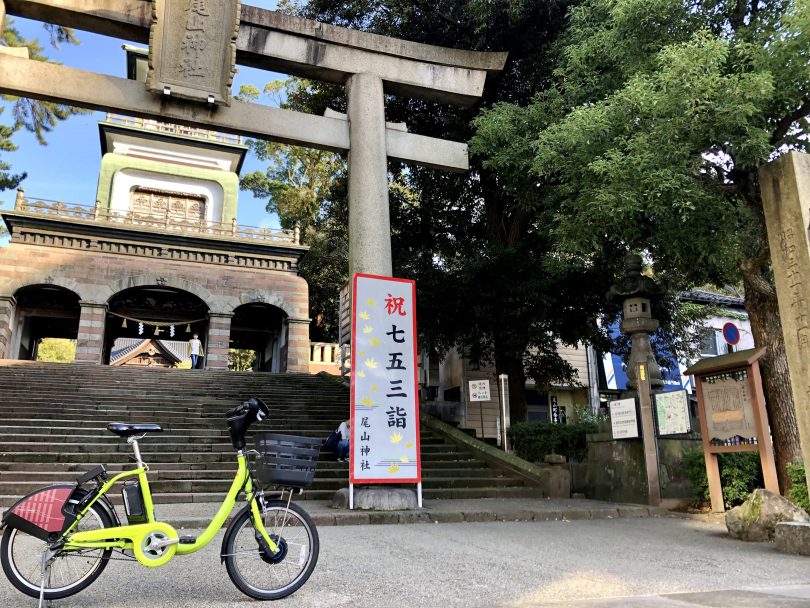
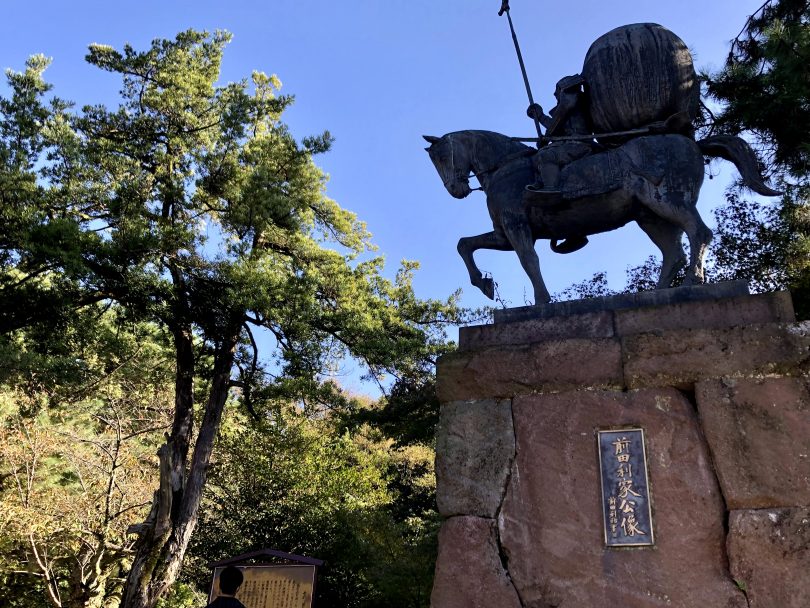
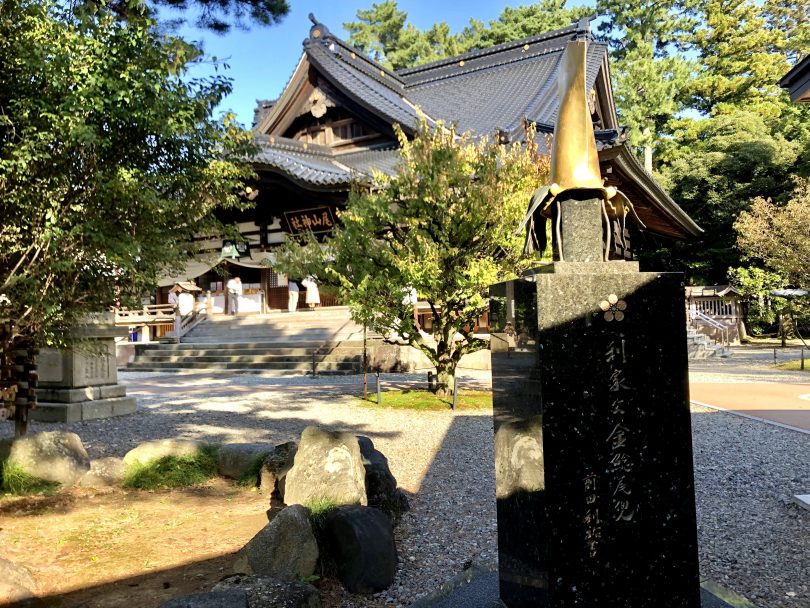
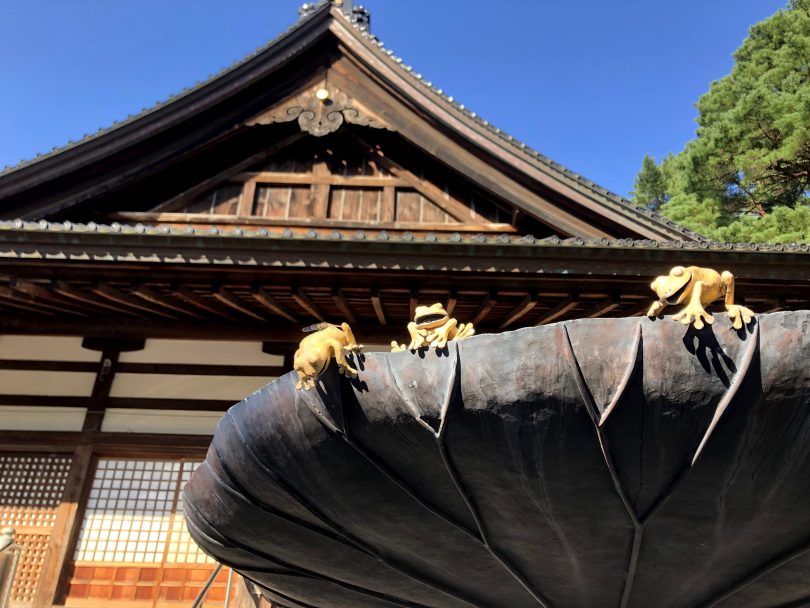
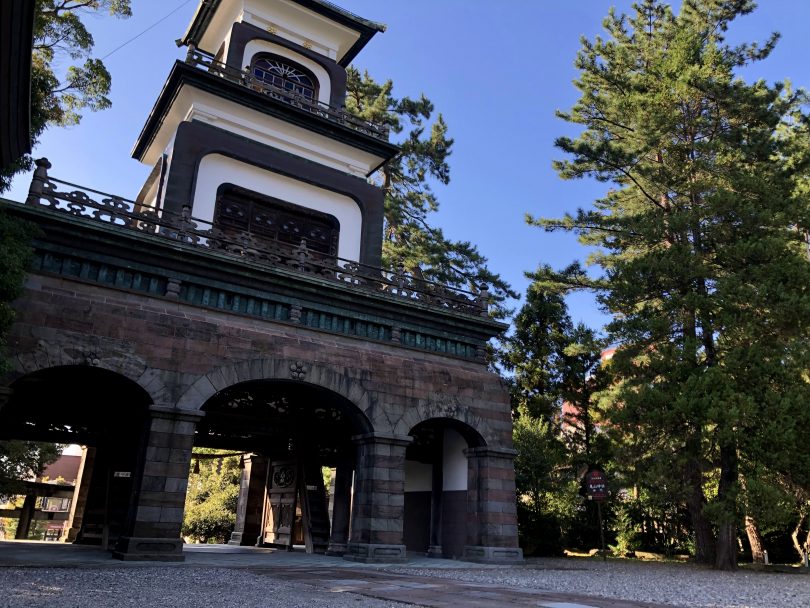
After a long walk, I rented a bike at Oyama Shrine port and headed back to Kanazawa station (about 1.6km).
Finish at Kanazawa Station! The Station is Full of Local Gourmet Food
On the way from Oyama shrine to Kanazawa station, I recommend stopping by Omi-cho market to buy some seafood souvenirs.
There are many fresh fish stores that ship the famous “nodoguro” and “kobako-gani”(female snow crab) nationwide during the season.
If you have enough time, you may want to stop by Kazuemachi Chaya-machi and Higashi Chaya-machi areas at dusk.
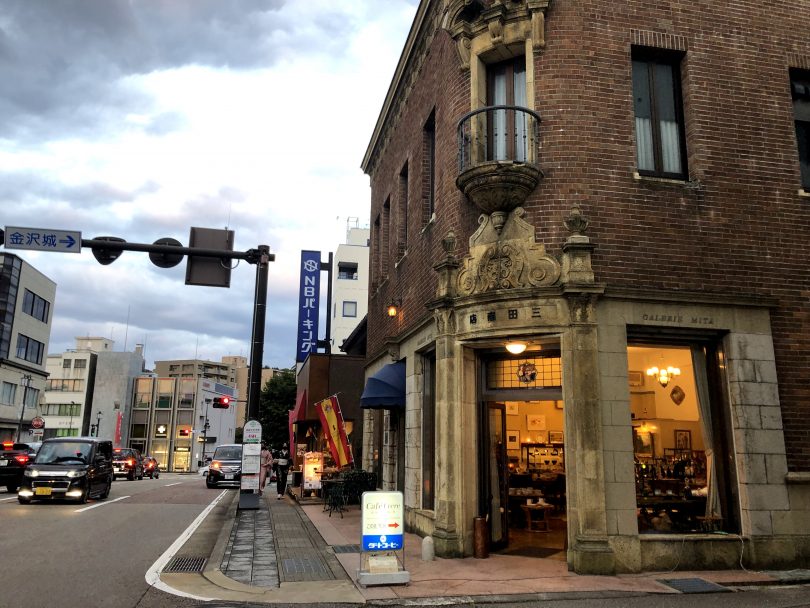
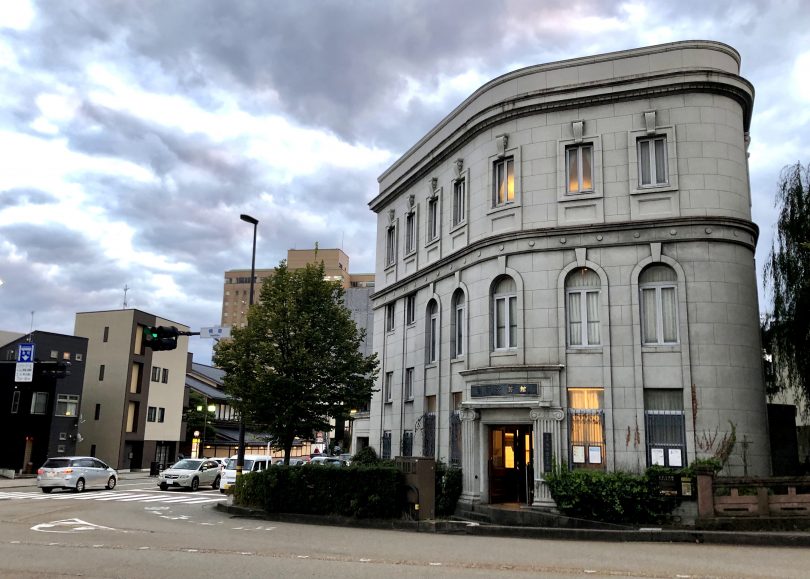
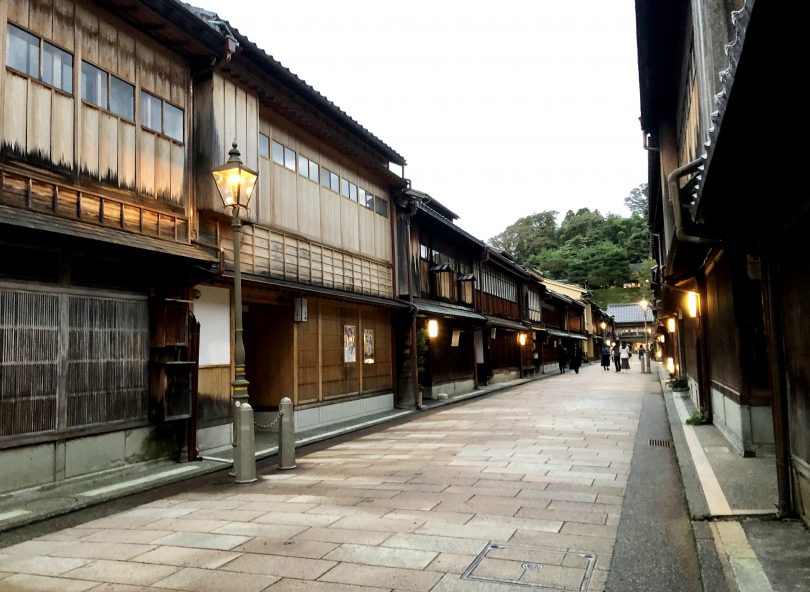
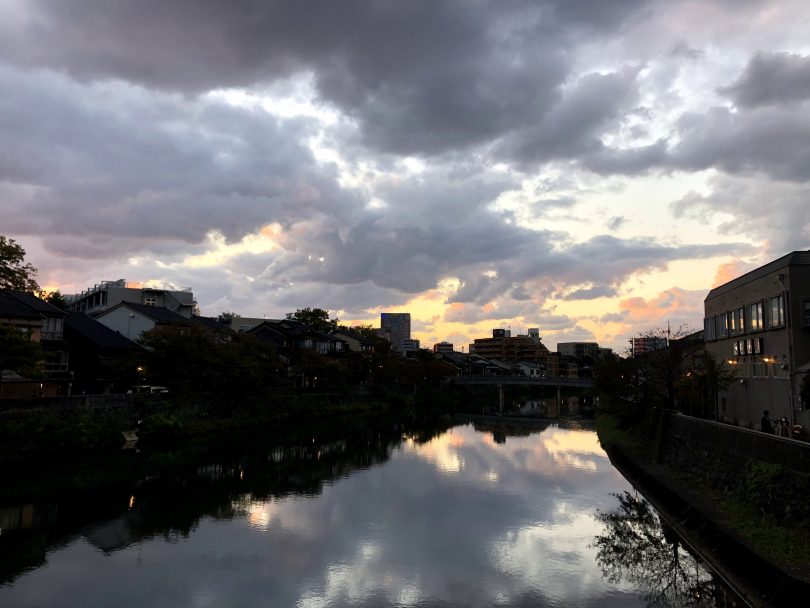
Returning the bicycle to the same port as the starting point, Kanazawa Station East port, I ended my ride.
By cycling around the major spots in Kanazawa for a whole day, I got to grasp the geography of the city.
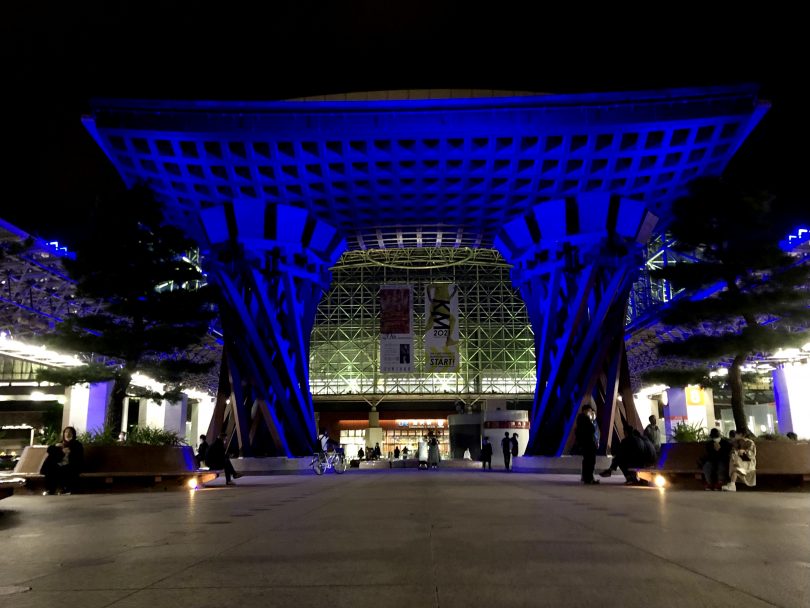
In Kanazawa Station, the Daruma doll-like “Hyakuman-san,” the Ishikawa Prefecture’s PR character for tourism, greets you with his charming face.
In Kanazawa Hyakubangai Anto station building, you will find a wide variety of local confections and seafood souvenirs, and you can enjoy choosing souvenirs right up until you get on the train.
In the same building, you can also find a variety of local gourmet foods, such as “Kanaeki no Chikuwa”, a counter “oden” dining where you can enjoy “Kanazawa Oden” made with Kanazawa’s fish paste, and “Ramen Samurai”, a ramen shop where you can eat “Amaebi komi ramen” made with plenty of sweet shrimp, a local ingredient.
You can fulfill your stomach after whole-day walking and riding.
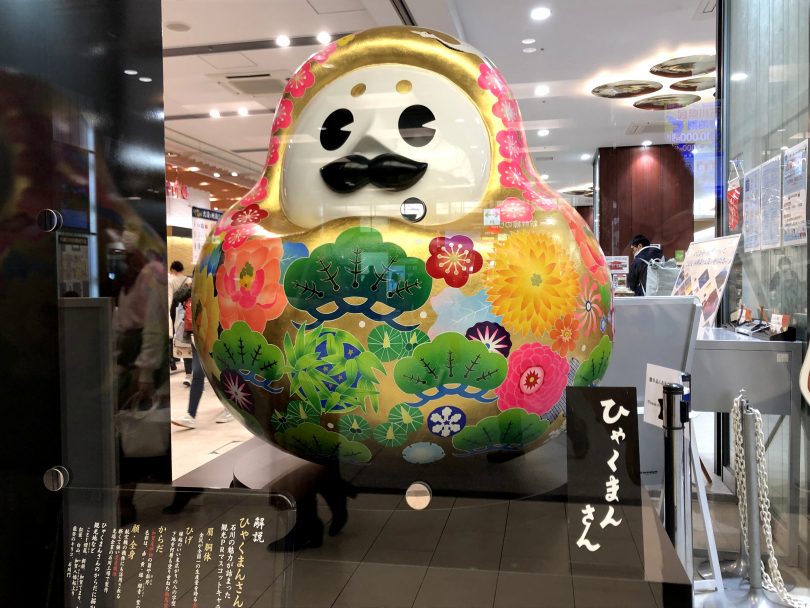
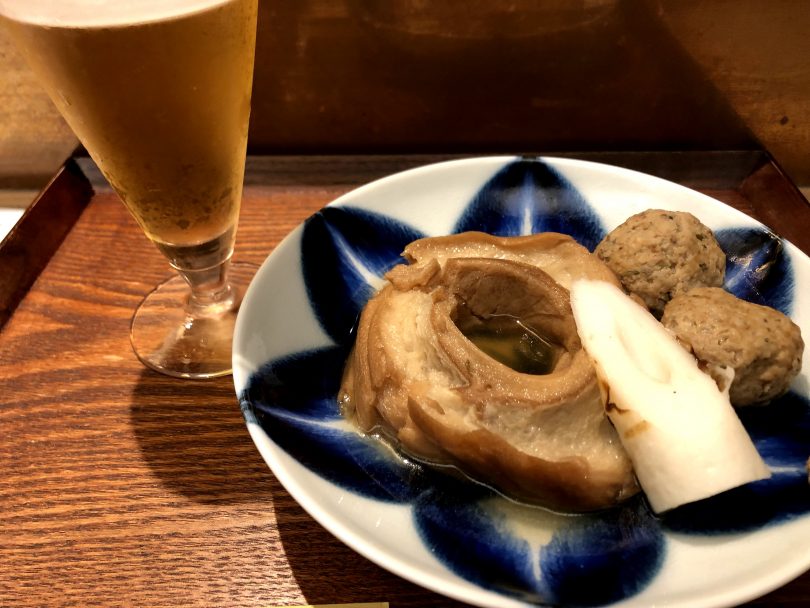
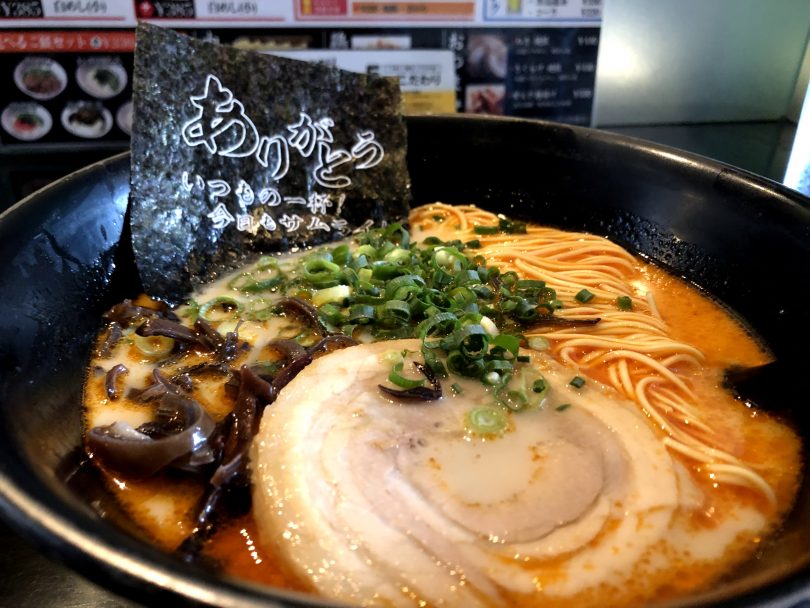
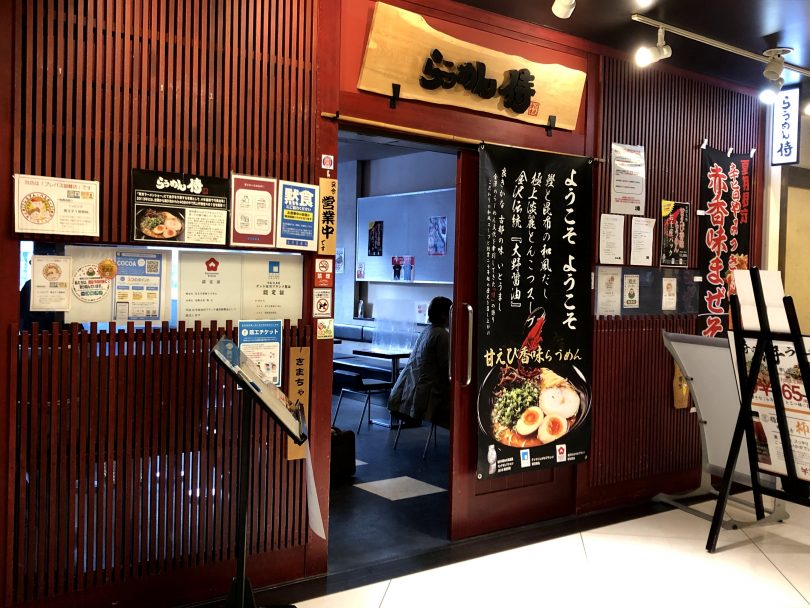
Summary
This was my first trip to Kanazawa and my first time using docomo share bike system.
Before I went on the trip, I couldn’t get a good sense of the geography just by reading a guide book, but as I rode a bike for a whole day, I gradually bean to see the face of the city.
“This is the shopping area for the locals,” “There are many fashionable grocery stores in this alley,” “There are many traditional houses here,” and so on.
I was impressed by the wide range of tourists using the share cycle service, from a group of young people in their 20s to a couple in their 60s.
As long as the weather permits, by using a bike, you can take your own course and pace, and get a feel for the city’s everyday scenery.
Why don’t you try a share cycle service for your next travel destination?
Related links
▼MCACHI-NORI Ishikawa Share Cycling
https://www.machi-nori.jp/en/


